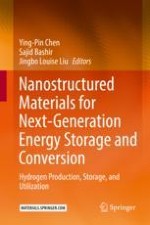2017 | OriginalPaper | Chapter
7. Strategies for Hydrogen Storage in Porous Organic Polymers
Author : Weigang Lu
Published in: Nanostructured Materials for Next-Generation Energy Storage and Conversion
Publisher: Springer Berlin Heidelberg
Activate our intelligent search to find suitable subject content or patents.
Select sections of text to find matching patents with Artificial Intelligence. powered by
Select sections of text to find additional relevant content using AI-assisted search. powered by
